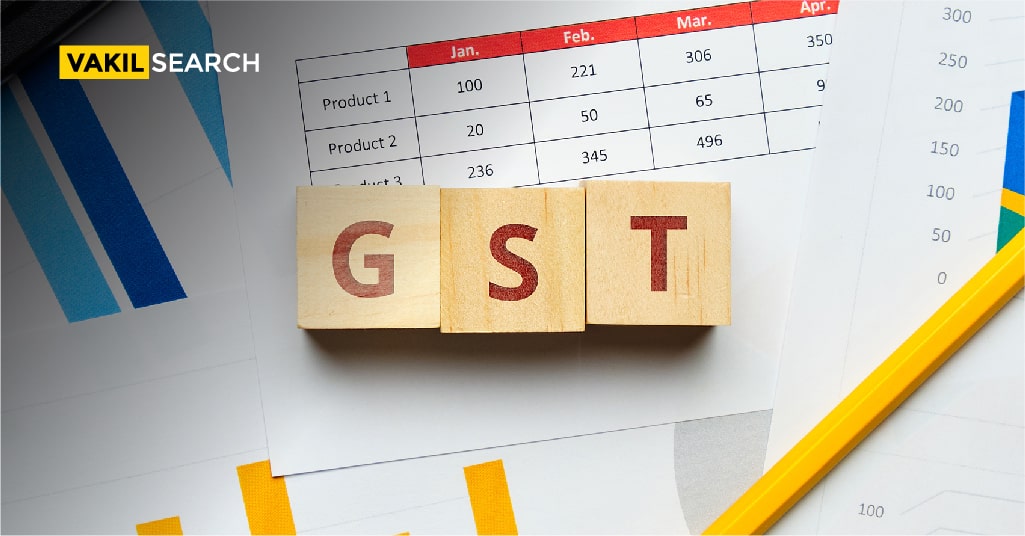Goods and Services Tax (GST) has brought significant changes in the taxation system of India, and it is mandatory for businesses to register for GST and comply with the tax laws. However, many businesses make mistakes while calculating GST, which can lead to penalties and legal issues.
Overview on the Common Mistakes to Avoid When Calculating GST
Goods and Services Tax (GST) is an indirect tax imposed on the supply of goods and services in India. GST has replaced multiple indirect taxes like VAT, excise duty, service tax, etc. Since its implementation, GST has brought a lot of changes to the taxation system of India. It is mandatory for businesses to register for GST and comply with tax laws. However, many businesses make mistakes to avoid calculating GST, which can lead to penalties and legal issues.
To avoid errors that happen while calculating GST manually, we at Vakilsearch can assist you with a GST calculator. The Vakilsearch Online GST Calculator makes it easy to calculate. Essentially, all goods and services in the market are subject to GST. In other words, GST is a comprehensive tax on the supply of goods and services.
Importance of Filing Accurate GST Returns
Filing accurate GST returns is crucial for businesses to maintain compliance with tax regulations. However, there are several common mistakes that taxpayers often make while filing their GST returns. In this blog, we will discuss the importance of filing GST returns and highlight some of the most common errors made during the filing process. Additionally, we will provide helpful tips to avoid these mistakes and ensure accurate GST return filing.
Filing accurate GST returns holds significant importance for businesses. In this section, we will explain why it is crucial to avoid errors and discrepancies while filing GST returns. We will discuss how accurate filing helps maintain compliance, avoid penalties, and establish credibility with tax authorities.
Common Errors Made While Filing GST Returns
This section will cover the most common mistakes in GST return filing that taxpayers make while filing their returns. Each mistake will be explained in detail, including its impact and potential consequences. The errors covered in this section are as follows:
- Inaccurate Reporting of Sales and Purchases: Explanation of how misreporting sales and purchases can lead to errors in tax liability calculation.
- Incorrect Input Tax Credit (ITC) Claims: Discussion on the importance of correctly claiming input tax credit and the potential consequences of incorrect claims.
- Non-Compliance with Tax Invoices and Documentation: Explanation of the significance of maintaining proper tax invoices and documentation and the repercussions of non-compliance.
- Late Filing or Missed Deadlines: Discussion on the implications of late filing or missing GST return deadlines, including penalties and interest charges.
- Ignoring Reconciliation and Mismatch Errors: Explanation of the importance of reconciling data with GSTR-2A and addressing any discrepancies to avoid penalties.
- Paying Tax under the Wrong GST Category: Discussion on the impact of selecting the wrong GST category while filing returns and how to avoid such errors.
- Treating Zero-Rated Exports as Nil-Rated: Explanation of the difference between zero-rated and nil-rated supplies and the potential errors in treating zero-rated exports as nil-rated.
Tips to Avoid Common Mistakes
To help taxpayers prevent common mistakes while filing GST returns, this section will provide practical tips and strategies. Each tip will be explained in detail, outlining how it can help avoid errors and ensure accurate GST return filing. The tips covered in this section are as follows:
- Maintain Accurate Sales and Purchase Records: Guidance on maintaining proper records to accurately report sales and purchases.
- Reconcile Input Tax Credit (ITC) Claims: Explanation of the importance of reconciling ITC claims with supplier data and how to do it effectively.
- Timely Filing and Payment: Advice on meeting GST return filing deadlines and making timely tax payments to avoid penalties.
- Validate Tax Invoices and Documentation: Tips on verifying the accuracy and completeness of tax invoices and other required documentation.
- Cross-Verify GSTR-2A with Purchase Records: Guidance on cross-checking GSTR-2A with purchase records to identify and rectify any mismatches.
- Consult with Professionals or Experts: Encouragement to seek assistance from professionals or experts for expert guidance and advice on GST compliance.
- Conduct Regular GST Audits: Explanation of the benefits of conducting regular GST audits to identify and rectify errors before filing returns.
- Utilise Technology and Automation: Information on how leveraging technology and automation tools can help streamline GST return filing and minimize errors.
- Seek Clarifications from the GST Helpdesk: Guidance on reaching out to the GST helpdesk for clarifications and assistance in understanding complex GST provisions.
Calculating GST using GST Calculator
GST Calculator is a useful tool that helps businesses and individuals calculate the Goods and Services Tax (GST) on their transactions. GST is an indirect tax levied on the supply of goods and services in India. It has replaced multiple indirect taxes like VAT, excise duty, service tax, etc.
To use the GST Calculator, you need to enter the details of your transaction, such as the value of goods or services, the applicable GST rate, and any other charges like freight or insurance. The GST Calculator will then calculate the GST amount and the total value of the transaction.
Using a GST Calculator can help businesses and individuals to calculate GST accurately and quickly. It also reduces the chances of errors in GST calculation, which can lead to penalties and legal issues.
Here is the formula used in Vakilsearch’s GST Calculator –
GST Amount = (Original Cost * GST Rate Percentage) / 100
Then, the net price of the transaction can be calculated by adding the GST amount to the original cost:
Net Price = Original Cost + GST Amount
The GST rate that applies to a particular transaction depends on whether it is an intrastate or interstate transaction. In the case of intrastate transactions, the following formulas can be used:
CGST = Applicable GST Rate/2
SGST/UTGST = Applicable GST Rate/2
CGST + SGST/UTGST = Applicable GST Rate
FAQs:
Q1: Why is it important to avoid mistakes while filing GST returns?
Avoiding mistakes while filing GST returns is crucial for several reasons. Firstly, it helps maintain compliance with tax regulations and ensures a good relationship with tax authorities. Accurate filing reduces the risk of penalties, fines, and legal consequences that can arise from non-compliance. Additionally, it facilitates proper cash flow management, and eligibility for input tax credit (ITC), and enhances the overall credibility and reputation of the business.
Q2: What should I consider when claiming input tax credit (ITC)?
When claiming input tax credit (ITC), consider the following factors: Eligibility: Goods or services claimed for ITC must be used for business purposes and meet GST regulations. Valid tax invoices: Maintain proper invoices with supplier details (name, address, GSTIN, invoice number, date) as supporting documents. Match supplier data: Cross-verify your purchases with GSTR-2A, ensuring details align for accurate ITC claims. Timely filing: Claim ITC within specified time limits, usually by the due date of the September return or the annual return deadline. Accurate reporting: Report the correct ITC amount in the relevant section of your GST return to avoid complications during audits.
Q3: How can I avoid late filing or missed deadlines?v
To avoid late filing or missed deadlines for GST returns, consider the following tips: Stay organized: Keep track of important dates, such as the due dates for filing GST returns, and maintain a calendar or reminder system. Plan ahead: Prepare and organize the necessary documents and information required for filing well in advance of the due date to avoid last-minute rush and errors. Use technology: Leverage accounting software or GST compliance tools that provide automated reminders, calculations, and filing assistance. Stay updated: Stay informed about any changes in GST laws, regulations, or filing procedures by regularly checking official government sources or subscribing to updates.
Q4: How can I address mismatches or discrepancies in GSTR-2A?
To address mismatches or discrepancies in GSTR-2A, follow these steps: Reconcile data: Compare the details in your own purchase records with the information available in GSTR-2A. Identify any discrepancies such as missing invoices, incorrect values, or duplicate entries. Communicate with suppliers: Reach out to your suppliers and discuss the discrepancies found in GSTR-2A. Request them to rectify and update their returns if necessary. Amend your returns: Ensure that your own GSTR-1 (outward supplies) and GSTR-3B (summary return) are filed accurately, reflecting the correct details and matching the information provided by your suppliers in their GSTR-1 returns. Rectify errors promptly: If you discover any errors or discrepancies in your own filed returns, rectify them in subsequent returns by adjusting the values and providing accurate information.
Conclusion
In conclusion, businesses in India need to be careful while calculating GST to avoid penalties and legal issues. They should avoid common mistakes like not knowing the applicable GST rates, incorrect classification of goods or services, not including the value of freight and insurance, incorrect place of supply, and not maintaining accurate records. Businesses should stay updated with the GST regulations and ensure that they comply with the tax laws. By avoiding these mistakes, businesses can streamline their GST compliance process and contribute to the growth of the Indian economy.










